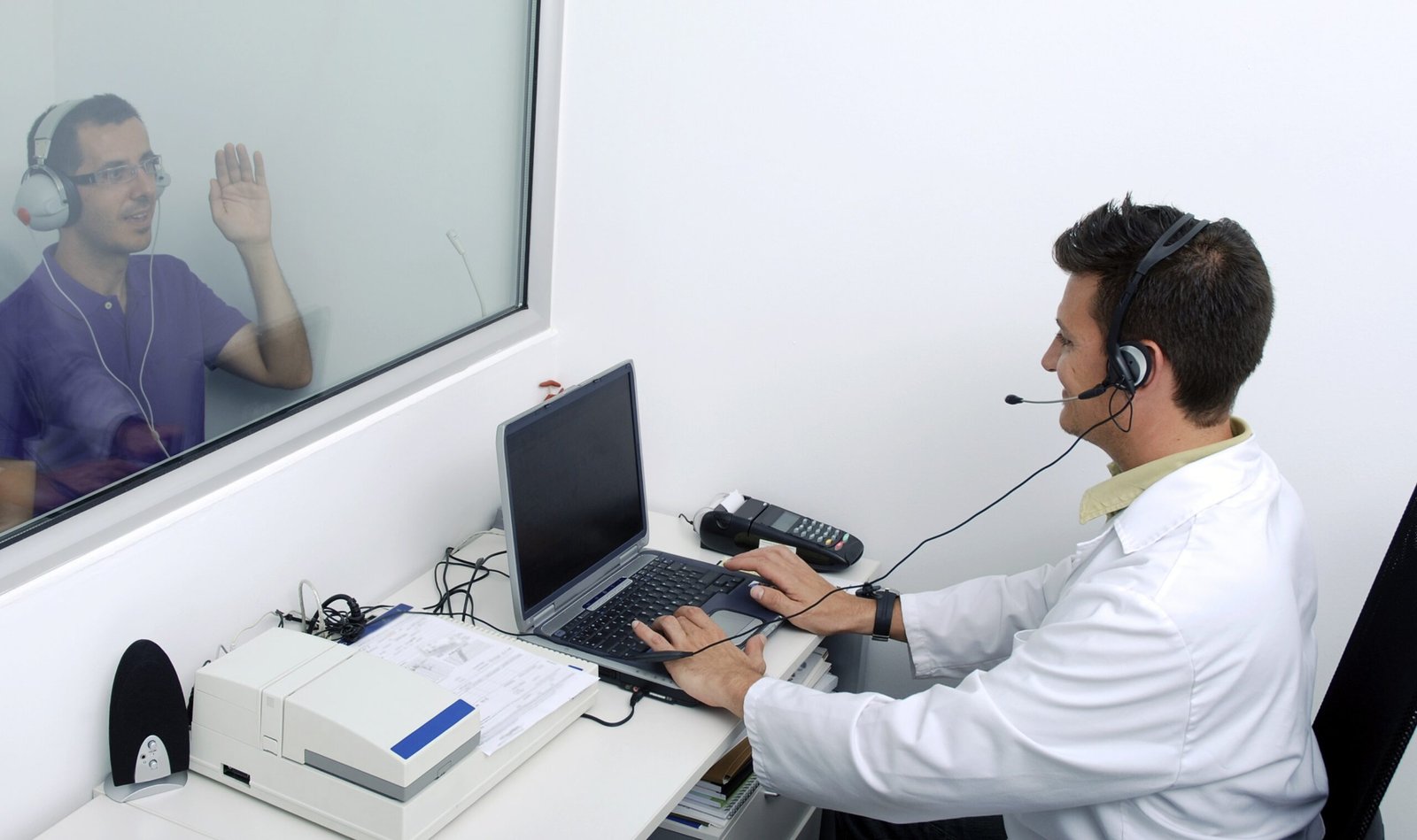There are many different ways in which you can measure how well your hearing and auditory system is functioning. However, it is important to note that audiologists are experts in this field, and they like to do their tests in a very particular manner. The purpose of this article is to show you how exactly these professionals carry out their auditory assessments on their patients. We feel it is important that you understand how the pros do it. This is because if you ever feel like you are getting hard of hearing, then you will know what the right approach to getting tested is.
A very large percentage of Americans and people around the world have some sort of hearing problem or another. Therefore, it would not be doing justice to these folks if the correct knowledge of testing for hearing loss is not disseminated amongst them. One of the main ways in which you can manage hearing loss is to spot the condition early on, and there are no better people than audiologists for understanding the proper method of testing for hearing loss. If you start getting hearing problems and your audiologists suggest hearing aids, don’t wait until they get worse. Companies like Blue Angels Hearing offer their products directly to customers, so they can sell their products at a lower price than other brands.
How exactly are the tests done?
There happen to be a lot of ways in which you can tell how well a person’s auditory system is functioning. Let us now take a more in-depth look at exactly that.
The most common type of hearing test that is most often used on both adults and children is something that goes by the name of pure tone audiometry. In this test, you are required to listen to a whole host of beeps and also whistles. These are called pure tones. You are required to let the examiner know when you are able to hear the aforementioned tones, and you do this with the help of a button. The tone that is the softest and is yet one which you can hear is then earmarked on a graph that goes by the name of an audiogram.
When the hearing gets measured with the help of pure tones that are presented through headphones, the resulting measurement is known as air conduction. The sounds then go through the air and down into the canal of the ear. Then it goes through the middle ear and finally to the organ that is very delicate within the ear canal. This organ is known as the cochlea.
How sensitive the cochlea is can also be measured with the help of a small vibrator. This is placed on the bone called the mastoid and one that is located behind the ear. Once again, the softest sounds that can be heard are then measured. It sounds which are presented in this manner travel through within the bones of a person’s skull to the cochlea and then on to the hearing nerves. This bypasses the middle ear. The testing that occurs like this is known as bone conduction.
The air conduction and bone conduction hearing levels on the audiogram can tell us a lot about where the hearing problem is.
How the pros test the hearing of babies and young children
Two main types of hearing tests that are specifically designed for babies and young children are behavioral and also objective testing. Both types of tests are pretty useful in determining the condition of hearing ability of babies and young children, So, it is important to try out both types of tests in order to best understand their hearing abilities.
Behavioral testing
This type of testing is when a child is required to perform an action in order to let us know that they have heard the sound. This has a lot of benefits, mainly because it tells us more or less the complete picture of the functionality of their auditory system.
Behavioral Observation Audiometry
Children who are under the age of six months can be properly tested with this method as well. This type of test consists of assessing the behavioral response to particular auditory stimuli. Some common behavioral examples are being startled by loud noises, fidgeting in sleep because of hearing noises, etc. The examiners of this type of test use a whole host of sounds such as cellophane, bells that are tiny, etc. How loud the sound is also measured with the help of a sound level meter.
Visually Reinforced Orientation Audiometry
In this type of hearing test, the child is required to turn towards a loudspeaker when they are introduced to the sounds used in the test. If the child looks at the speaker, then they are given a reward such as a puppet. This reinforces the belief that when the sound is heard, the puppet will be there to be seen. One of the main benefits of this type of test is that we can very adequately measure the hearing thresholds.
Play audiometry
This type of test works very similarly to the pure tone audiometry that we have discussed above. The only difference between the two types of testing is that in play audiometry, upon hearing the tone, the child is required to put a marble within a race of marbles. They are then required to press a keyboard on a computer in order for something to happen, or they can put a piece of the puzzle back into the puzzle. One of the best ways to make sure that the child does not get bored is to make a game out of the hearing test. This will most definitely make sure that the child is not bored of the test and does not get distracted. If they get distracted, then the results of the tests will not be optimal. One other thing to note is that this type of test is also sometimes known as stimulus-response testing.








Leave a comment